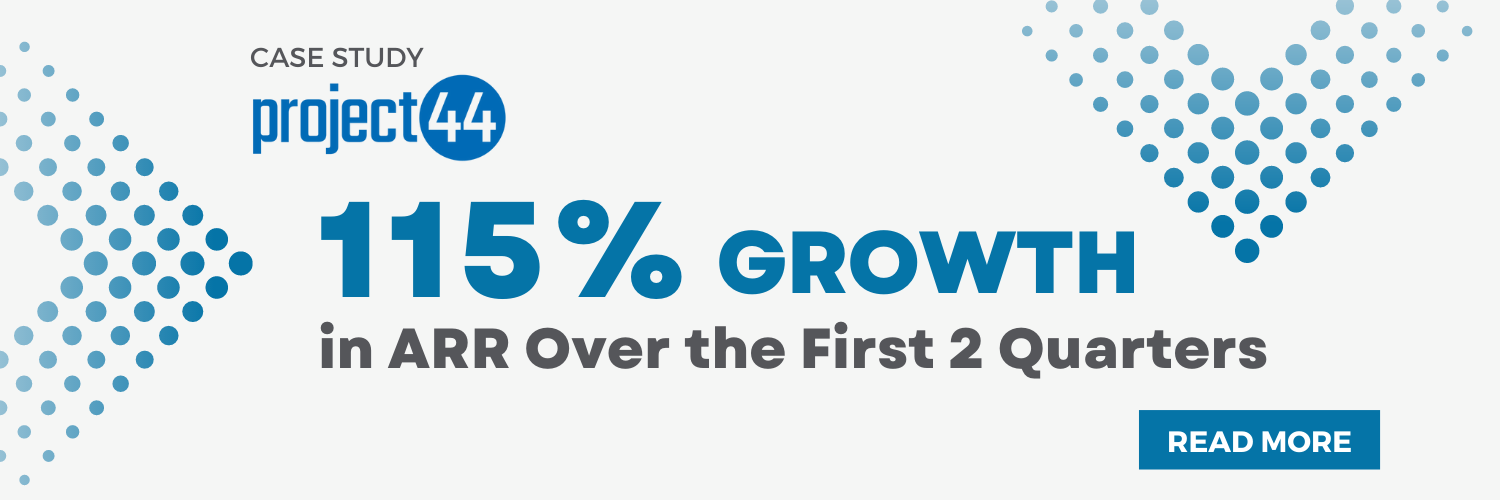
How to Drive Cost Optimization of Your Sales Organization
Categories: Company Alignment | Scaling Sales | Economic Change | Unicorn Companies
As the external economic environment continues to shift, many organizations are looking for ways to optimize costs and make their sales force more efficient.
One focus area has emerged as a key differentiator for those organizations who have been able to do more with less, accelerate revenue, and exceed their objectives during this economic time: alignment.
Succeeding during economic change requires all hands on deck and a united motion toward your goals. Perhaps the recent market shifts have exposed misalignment in your teams that wasn’t as critical before. Or maybe your organization has struggled to pivot to match the speed of the market, resulting in misalignment on how you’re addressing changing customer needs.
Let’s review 3 areas where your organization could be suffering from misalignment — executive, cross-functional, and top-down — and take a look at the symptoms and potential outcomes of addressing each.
Executive Alignment
When economic change shifts the sales landscape, most sales organizations find themselves on a new playing field with new problems to address. This can cause members of your leadership team to have different ideas about where you stand, even if you think you have a unified strategy. Everyone on your team can answer the following questions, but would those answers be the same?
- What problems do you solve for the buyer?
- How specifically do you solve these problems?
- How do you solve it better than the competition or “doing it internally”?
- What's your proof?
Often, executive teams align on an organizational goal or initiative without realizing that they differ in the way they are executing that strategy. A unified narrative about how your solution meets your buyer in their current state is key to accelerate every business function.
Your executive team may be feeling increased pressure from the economic downturn, whether internal or external. This pressure can potentially cause each function to turn inward in the interest of productivity, when in fact collaboration is even more necessary to remain productive at this time. Here’s how project44 used a unified message to enhance executive alignment and cross-functional collaboration:
Cross-Functional Team Alignment
When your sales organization is under economic pressure, it’s easy to go “heads down” and focus on just generating sales numbers. Yet, it’s never been more important than now to ensure all cross-functional teams are working in lockstep towards your organizational goals.
Most buyers are not excited about spending money right now — what gets them excited is a great customer experience and a clear picture of ROI, both of which can be improved through better cross-functional alignment. Cross-functional alignment looks like:
- Common messaging about the value you provide and how you provide it
- Simple, defined processes for data sharing between teams
- Frictionless handoffs between sales and post-sale teams
- Ongoing updates to the sales process with success stories and feedback from implementation teams
Without these items in a clearly defined rhythm, you risk losing out to no decision, or ‘do it internally.’ If your competition is already using cross-functional teams to collect and adapt to an ongoing stream of customer information, you’ll lose out to them every time. That kind of adaptability is what sets winners apart in today’s ever-changing sales environment. See how project44 attributes cross-functional alignment as a key competitive differentiator for them in the recent market:
Top-Down Alignment
Achieving top-down alignment means you have total buy-in for your objectives from every member of the sales team. Especially in an economy where resources are scarce, ensuring that valuable seller time is spent on actions that align with your mission is critical. Misalignment can mean low-value deals, long sales cycles and a lack of ROI on the strategic investments you’ve made.
As a leader, you can’t be everywhere at once – ensuring that each seller’s day-to-day activities are driving forward your company objectives may seem like a tedious and never-ending task. Here are a few leadership actions that encourage top-down alignment:
- Provide “the why” behind company initiatives and leadership actions
- Supply toolkits and training that give a clear picture of what success looks like
- Ensure managers have the skills to coach and support sellers
Your front-line sales managers are the linchpin of your top-down alignment strategy. They have the power to reinforce behaviors that drive results and set expectations at the seller level. That’s why it’s crucial to ensure they’re coaching rather than just enforcing. When sellers can clearly see "the why" behind new initiatives and the results your desired actions can drive, they self-enforce the new behaviors, and manager time can be spent on moving opportunities forward. That kind of efficiency is a key competitive advantage during an economic downturn.
One way to create direct visibility into how the sales strategy affects your sellers’ ability to close is by enabling the seller-manager relationship with deal technology. Project44 implemented Opportunity Manager®, a Salesforce-integrated, deal data tool, that revolutionized their approach to coaching. Hear how it impacted their team:
The Gravitational Pull of Alignment
Like many sales organizations, you may be having internal conversations about how to manage and optimize costs in our current economy. Consider the impact of alignment on your daily activities and organizational goals. For project44, total organizational alignment was an investment that paid off in terms of efficiency and growth.
Even during a time of widespread economic caution and uncertainty, they were able to increase their average deal size by 53% and boost annual recurring revenue by 115% YoY. Dig deeper into how alignment affected these outcomes by reading the case study.


